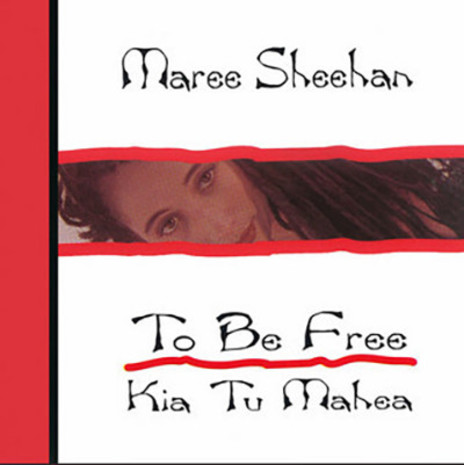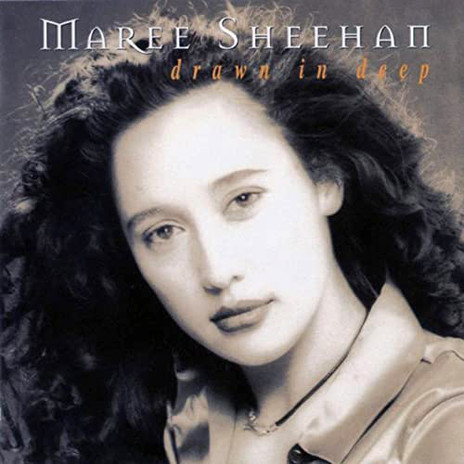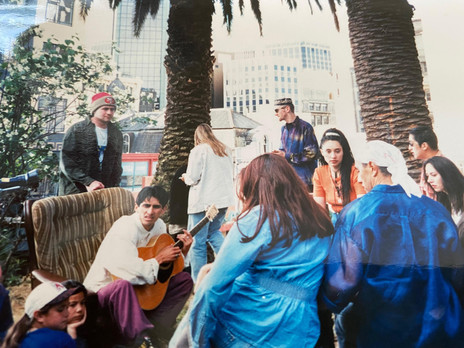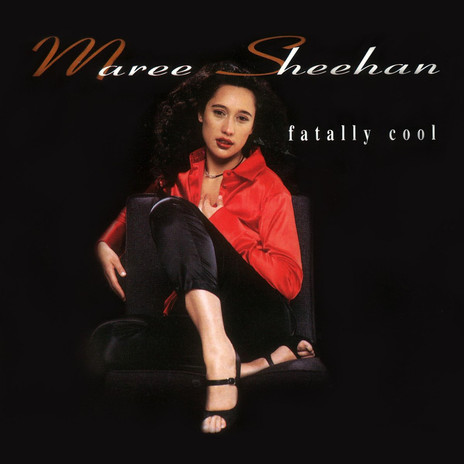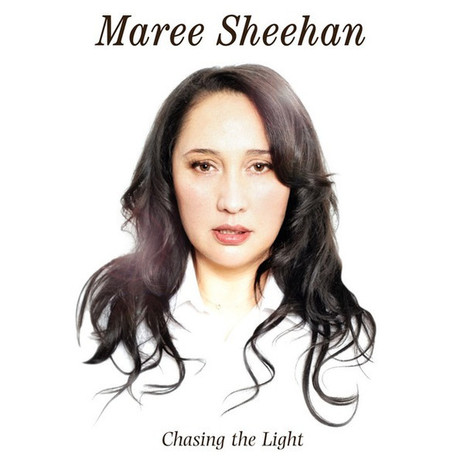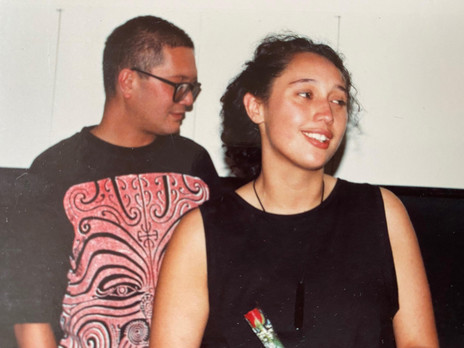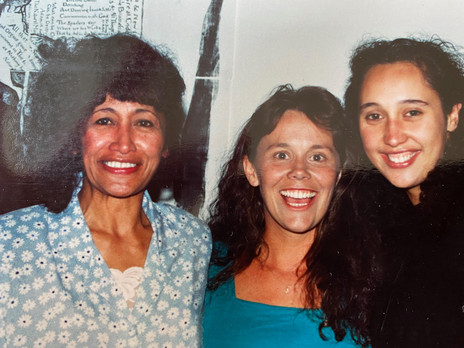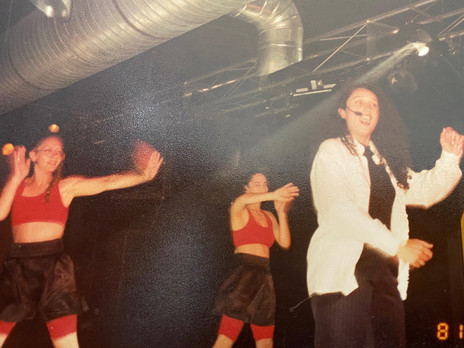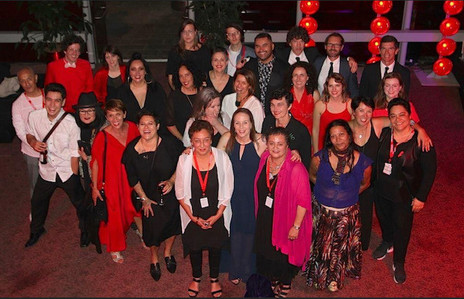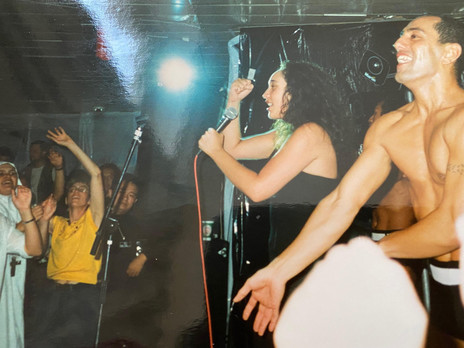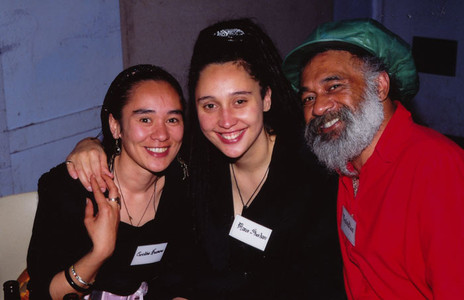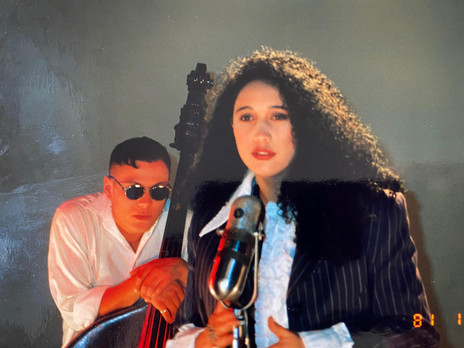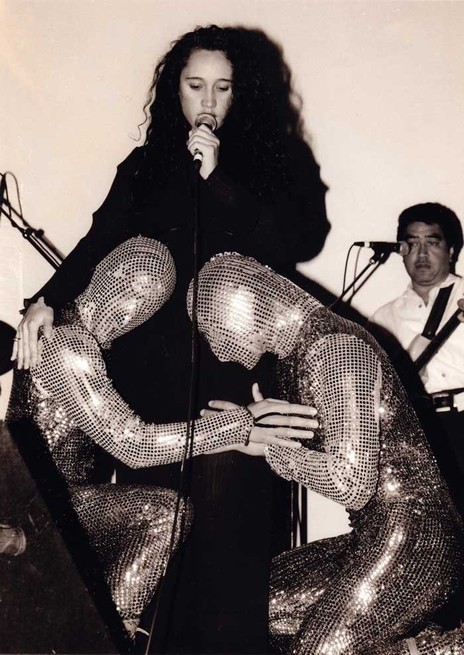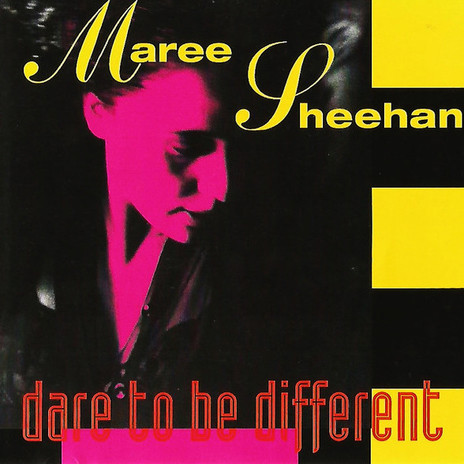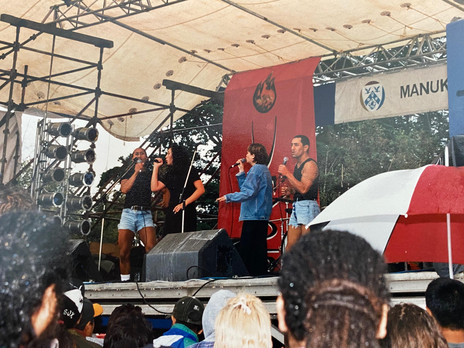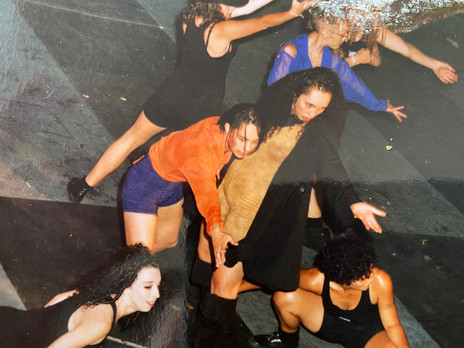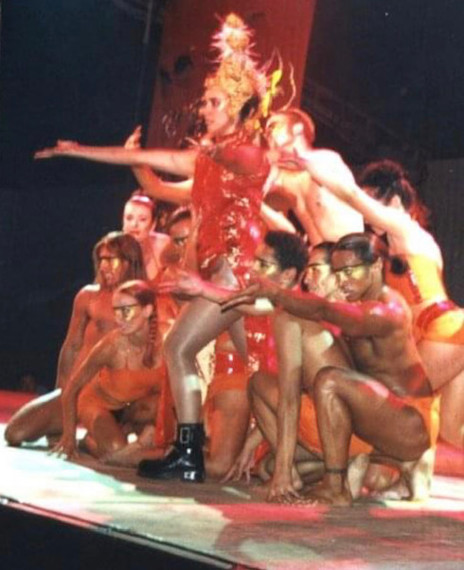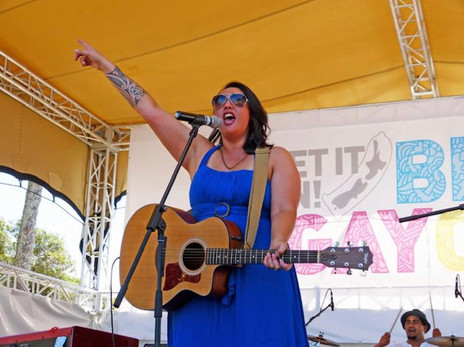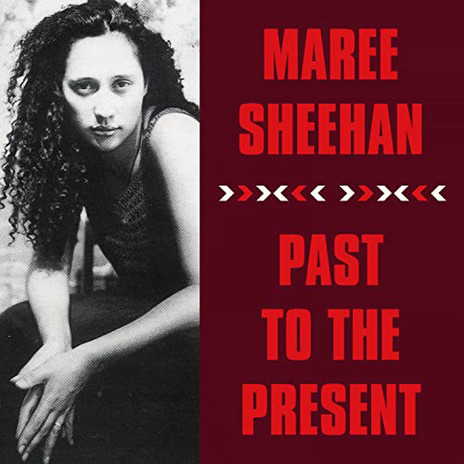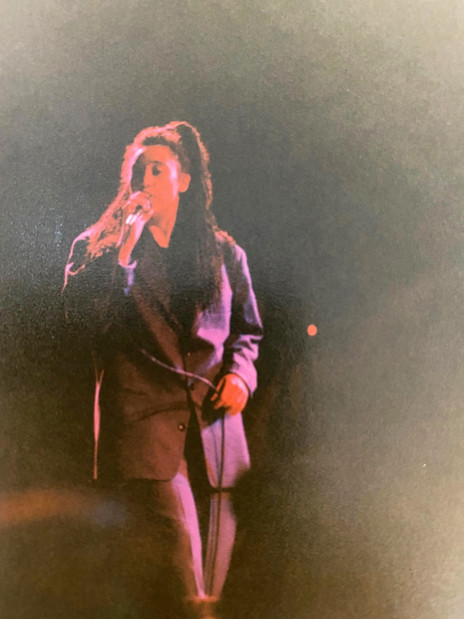At the age of four, her family relocated to Pōrangahau, a small township in central Hawke’s Bay. At home, the records they played were international and commercial: The Bee Gees, Frankie Valli & the Four Seasons, Elvis Presley and Jesus Christ Superstar.
Classical music also played a large role in Sheehan’s childhood, through her formal piano education. Her training began at eight years old, and eventually led her to begin writing songs in her early teens. “I started composing sort-of stories, and lyrics, when I was about 14 years old,” she told the e-journal Te Kaharoa in 2014. “I felt that I had messages or stories that I wanted to write about, or emote about, as a teenager, and I used music as a way of doing that.” When she was nine, her family moved back to Christchurch, and having attended a predominately Pākehā school, Sheehan describes that time in her life as culturally isolating.
Going to high school in Christchurch, Sheehan fell in love with the rock and punk music that was popular in that scene, in particular David Bowie, Siouxsie and the Banshees, and Violent Femmes. Later in her teens, she attended the Polynesian Performing Arts Centre in Christchurch, where she further developed her skills in composition and songwriting.
The course also offered her an intensive experience in collaboration, and that was where she joined her first groups: the electronica outfit Eyebrows, reggae band Ahikā, and the Black Kats. Playing keyboards for the Black Kats – a women-led group that openly discussed Māori issues – had a significant influence on Sheehan’s kaupapa as an artist.
Playing for the Black Kats, a women-led group that discussed Māori issues, was a significant influence.
It also played a major role in her next career move, as it is how she first met Neil Cruickshank, one of the co-founders of Tangata Records. Cruickshank was highly supportive of Sheehan pursuing her own musicianship as a solo artist, and at the age of 21, she signed to the label and moved to Auckland. “It was completely, completely exciting” she told AudioCulture in 2021. “I was really lucky because I knew Neil, so I trusted him.”
She was quickly paired up with producer and label co-founder George Hubbard, who shared her love of dance and house music. “He had a really good understanding of what type of genre of music I was going for,” said Sheehan in 2021. “I was really influenced at the time by Frankie Knuckles, Madonna and Janet Jackson ... there were no other Māori women at the time doing that type of music.”
Sheehan has always been a production-forward songwriter, with a clear idea of the final sound, and collaborating with other producers and musicians, such as Paul Moss and Malcom Smith of the Fan Club, and keyboards player Stuart Pearce, was a high point for her. “With my songwriting, I hear everything in my head. I had a very clear musical vision of how I wanted things to sound like. They [producers at Tangata] were all supportive, and they alleviated my ideas at times. They knew how to use samplers when I was only just getting my head around them.”
Between 1991 and 1994, Sheehan released four singles with Tangata Records: debut single ‘Make U My Own’, the acid-jazz inspired ‘Dare to Be Different’, R&B song ‘Fatally Cool’, and feel-good anthem ‘To Be Free – Kia Tu Mahea’. It was a strong introduction to Sheehan’s style, and she was nominated for most promising vocalist at the NZ Music Awards in 1993.
Sheehan adored the songwriting, composition, and collaboration of her work, but live performance was not a passion in the same way. “A bit like Dave Dobbyn says, I used to want to spew my guts out before I got on stage. But I’d be fine once I got up there.”
During the early to mid 90s, performing at LGBTQI+ gigs became a mainstay of her circuit.
Regardless, she performed consistently in New Zealand, particularly Auckland, during the early to mid 90s, with LGBTQI+ gigs becoming a mainstay of her circuit. “I had audience support through that community, and big audience reach through that community, because those parties were massive at the time,” says Sheehan.
Although Sheehan did not publicly discuss her sexuality during this era, her community recognised the themes in her lyrical matter and music videos. “When I look back now, that time when I was in my twenties in the 1990s, it was a scary time to come out publicly,” says Sheehan. “But at the same time, I needed to express who I was, and I did that through my music and videos. I feel proud that I released music that was authentic to who I was and gave a voice in a commercial way. ‘Dare to Be Different’, ‘Strength of Love’, ‘What Have You Done To Me’ – they did really well.”
Sheehan was able to express her Māori identity a little more openly in her work, but there was still significant resistance from commercial media and radio. “We were starting to get some distribution for our music, but we were still fighting the fight to have our music, especially te reo, in the mainstream.”
In 1994, she released ‘To Be Free – Kia Tu Mahea’, which included Māori instrumentation, te reo in the chorus, and a backing performance by renowned kapa haka group Te Waka Huia, who also appeared in the music video. The song gained further publicity, featuring on the Once Were Warriors soundtrack that same year. As with all of Sheehan’s work with te reo, her mother was a great support in crafting the right lyrics. “It’s always important for me to acknowledge my mum. Especially when it comes to everything I’ve done in te reo Māori. She was always there to help and support me.”
Sheehan also found support from her musical community, as she worked parallel to many Māori and Pacific artists who were also striving to include their culture and language in their music: Moana and the Moahunters, Emma Paki, Stephanie Tauevihi of Strawpeople, and Upper Hutt Posse. “There was an intrinsic little cohort of us, bubbling away and making stuff, and putting stuff out. I didn’t have collaboration with those people, those women, but we all knew each other and we all supported each other ... that was a beautiful thing that I loved.”
Tangata had been a successful launching pad for Sheehan, as well as a valued network of like-minded artists, but her desire to be with a major record company had grown over the years. “I could see, at that point, the power that a major record company had in terms of distribution of your music, getting it onto radio, getting it on television. I think at that time, I was really ambitious. I really wanted to have that, I wanted to have my music out there.”
Her manager at the time, Jan Cording, arranged for Sheehan to meet with Jeremy Freeman of Village Roadshow, New Zealand. They played Freeman her new song, ‘Past to the Present’, and she was soon signed to the New Zealand branch of Roadshow Music.
“If you were doing full te reo, you could expect to not get much commercial airplay, which sucks.”
Both English and te reo versions of ‘Past to the Present’ were subsequently released with Roadshow in 1995. The English version stayed in the Top 40 NZ Singles Chart for four weeks, peaking at No.22, while the te reo version, ‘He Konei Te Wa O Mua’, was nominated for best Māori song at the NZ Music Awards in 1996. “If you were doing full te reo, you could expect to not get much commercial airplay, which sucks,” says Sheehan. “That’s why at the time I did ‘Past to the Present’ in both Māori and English, so one would hit one station and one would hit the other. You had to think about these things.”
It wasn’t long before Roadshow Australia showed an interest in Sheehan and took over from the New Zealand branch. She was now fully supported to make her debut album. Sheehan moved to Australia for six months to work with producer Peter Martin and was booked into the coveted EMI Studios 301 to record. “That was amazing for me” she said in 2021. “Really a dream come true, in those days.”
Drawn in the Deep, the nine-track album, was released in 1995, and included previously released tracks ‘Fatally Cool’ and ‘Make You My Own’, with ‘You Can’t Hide Love’ and ‘What Have You Done To Me’ as the stand-out singles.
Speaking to Express magazine upon its release, Sheehan said, “I finally got to hear the whole album come together at a level which I think is international. I think it could stack up production-wise against anything else.” Express reviewed the album very favourably, noting “her confidence in the standard of the album is apparent and well deserved”.
Sheehan toured to promote the album in Australia and New Zealand, and enjoyed international dates in New York and Canada. The latter was at the indigenous festival Dreamspeakers, where she played to the biggest crowds of her career.
On paper, Sheehan’s career was ticking all the right boxes, but it was becoming increasingly clear to her that the relationship with Roadshow Australia wasn’t working, and she felt Drawn In The Deep was a reflection of that. “At the time I was pinching myself, but when I look back now, I don’t know if Peter necessarily was the best fit in terms of production for me,” Sheehan reflected in 2021. “We got there in the end … we made compromises.”
Sheehan was, at that stage, still heavily influenced by house and dance music, such as Janet Jackson’s debut album That’s The Way Love Goes, as well as Everything But the Girl and Frankie Knuckles. Roadshow, on the other hand, were interested in packaging Sheehan more like a traditional Australian pop star. This also affected her freedom to express her Māori identity. “They weren’t interested in elevating the cultural side of me ... this was going to be an album that for an Australian release, and then New Zealand was going to come second.”
In 2000, five years after the release of Drawn in the Deep, she decided to step away from Roadshow indefinitely. “I felt disillusioned. I didn’t feel the album had done as well as I wanted,” she said in 2021. “And later on, I felt like I really needed and really wanted my te reo Māori – my culture – in my music.”
“I felt like I really needed and really wanted my te reo Māori – my culture – in my music.”
Upon leaving, Sheehan did not pursue a new label. She wanted to take a significant break from being a recording artist. “I felt a bit exhausted from it all, and I didn’t want to do another album. I love making music, and I still love making music to this day, I love to compose. But I had enough of touring, playing small clubs, playing to two people, and then sometimes playing to thousands … it had been all of my twenties and some of my teens, it was time for a change.”
She had many uses for her newfound time, and enjoyed living abroad in London, travelling, raising her son, and getting her Bachelor’s Degree in English and Music. “I wanted to experience the world without having to be an artist.”
Music remained a big part of her professional life, through her ongoing work in mentorship. Sheehan has been mentoring as far back as the early 1990s. “Being a musician in New Zealand doesn’t always pay the bills,” she says.
From running music and songwriting workshops for children in South Auckland communities, to mentoring Nesian Mystik for Rockquest in 2000, music facilitation and education has been a mainstay of Sheehan’s career. Te Ara Poutama – the Faculty of Māori and Indigenous Development at Auckland University of Technology – were paying attention to her work in the sector, and she began collaborating with the institution on music programmes, eventually becoming an AUT lecturer in 2009.
Although she had taken a step back from being a recording artist, her songwriting never truly stopped, and by the early 2010s she had acquired a batch of songs she liked so much, it pushed her to do another album.
“I had really fallen in love with them, and I could hear how they had meant to be,” she says. “I thought, ‘I’m going to try again.’”
Recorded with engineer Regan McKinnon, the sound was more piano focused than her previous work and leaned more towards a singer-songwriter style. Although her process is still the same as it had always been – starting with a vocal, and either guitar or piano – her production skills were far more elevated this time, and Sheehan handled a lot of the production herself, before mixing with Neil Baldock at Roundhead Studios and mastering with Steve Smart at Studios 301.
The 10-track album Chasing the Light was released in 2013 by Sheehan’s own record company and distributed by Warner. “Sheehan’s assured album is very much that of a mature artist,” Graham Reid wrote for NZ Herald. “‘That’s What I Prayed’ deals with a close friend dying unexpectedly and the losses felt by her family and friends; ‘In The Light’ is confident self-assertion when a relationship needs to be dropped. There are also dancefloor-party songs such as the affirming ‘Without You’, the snappy ‘Do I Wish’ and the reggae step of ‘Rock With Me’.”
The album was launched with a show at inner-city Auckland bar Tabac, and Sheehan played a handful of gigs around the country, with touring kept deliberately light. “What I realised is that I don’t like performing live,” she says. “I didn’t like it when I was younger either. What I love is writing songs. I love it. And recording as well, that’s where I get excited. We had a big listening party at Roundhead at the end of the album, and that would have to be the pinnacle of my artistic happiness.”
Since Chasing the Light, Sheehan’s focus has been on academia and composition. Since she began lecturing at AUT in 2009, she has gained a master’s in philosophy, and a doctorate in audio portraiture. For her PhD project – “The sound of identity: interpreting the multi-dimensionality of wāhine Māori through audio-portraiture” – she created soundscapes of three Māori women. “What is important to me is that the work is always about honouring and affirming Māori women, and giving our stories and who we are, a platform.” Sheehan is now a senior lecturer at Te Ara Poutama, where she first began lecturing in 2009.
As a composer, Sheehan works across a variety of mediums: film, television, theatre, documentary, and apps. Her major projects include documentary series Home, Land and Sea for Māori Television, NZ Doc Edge short film Pluck, Chelsea Winstanley’s immersive short film Toi Tu Toi Ora and stage composition for Ōkareka dance company and Exhale dance tribe.
“I love working to screen, I love working to pictures, that’s where I want to go.”
Sheehan is passionate about composition for film and television. In June 2021, she was awarded an APRA Professional Development Award to progress her education in this field. The award includes time working with mentors such as sound designers Dick Reade and Dave Whitehead, and Chris Faiumu (aka Mu, Fat Freddy’s Drop). “I love working to screen, I love working to pictures, that’s where I want to go,” says Sheehan. “I want to work with Māori and indigenous women, the LGBTQ community, the indigenous community, to tell their stories, and lend my sound to their stories … those stories are important to me.”
Would Maree Sheehan ever release another album? Maybe. “If I did do another album, it would probably be jazz. More intimate, piano driven and vocally driven, and not have such a big band necessarily. I’d play small, intimate venues, and I’d be happy with that.”
Despite her reluctance to play live, she loved her time performing in the tribute concert for Mahinaarangi Tocker at the Auckland Town Hall in 2018, with a full band and grand piano.
No matter her role, Sheehan continues to be a champion of wahine Māori, and the inclusion of te reo in mainstream media. “It’s a fight we still continue to have now. We want mainstream.”
It’s a conversation she helped bring into the cultural consciousness 30 years ago, and her place in that movement comes with a sense of pride, and community. “Being older, I feel a closer kinship and sisterhood to other Māori [and] Pacific Island singer-songwriters of my day,” she reflects in 2021. “I feel a part of that sisterhood of where we came from in the 90s. I don’t see myself as an individual, I see myself as part of a whānau and part of a hapū, part of an iwi, part of a community.”
